Lavender Extract and Its Calming Effects
Nature’s Fragrant Path to Relaxation
You inhale — and instantly, your shoulders drop. The scent of lavender has that effect: a gentle reminder that calm is still possible.
Used for centuries in herbal medicine and aromatherapy, lavender extract (Lavandula angustifolia) has long been celebrated for its soothing, anti-anxiety, and sleep-enhancing properties. From essential oils and teas to standardized oral supplements, lavender’s compounds can reduce stress, slow heart rate, and help restore balance to the nervous system — naturally and safely.
But what exactly makes lavender so calming? How does its fragrance affect the brain? And what’s the difference between smelling lavender and taking it as a supplement?
This article dives deep into the science of lavender’s calming chemistry, its benefits for sleep and mood, and how to pair it with magnesium, GABA, breathwork, and therapy for complete mind-body relaxation. 🌙
Looking for supplements for This? Click here.
🌸 A Brief History of Lavender in Healing
Lavender’s use dates back thousands of years. The Egyptians used it in perfumes and embalming rituals. Ancient Romans bathed with it for relaxation (lavare means “to wash” in Latin). In medieval Europe, it was scattered across floors and pillows to ward off infection and bring peace of mind.
Today, lavender’s reputation for calm is supported not just by tradition — but by modern neuroscience. Its essential oils and extracts interact directly with the brain’s neurotransmitter systems, producing measurable changes in stress hormones, heart rate, and sleep cycles.
💬 In short: lavender is where scent meets science.
🧠 The Science Behind Lavender’s Calming Effects

Lavender’s key active ingredients — linalool and linalyl acetate — are natural aromatic compounds that have profound effects on the nervous system.
When inhaled or ingested, they cross the blood-brain barrier and interact with the GABAergic system, the same pathway targeted by many anti-anxiety medications (like benzodiazepines) — but without the sedative side effects.
🧬 Mechanisms of Action
GABA Enhancement
Linalool binds to GABA-A receptors, promoting calm and reducing excitatory brain activity.
This slows overactive neurons and creates a sense of peaceful clarity.
Cortisol Regulation
Lavender reduces cortisol, the primary stress hormone, especially when inhaled before bed.
Lower cortisol = improved sleep initiation and emotional stability.
Autonomic Nervous System Balance
Lavender increases parasympathetic (“rest-and-digest”) activity and decreases sympathetic (“fight-or-flight”) tone.
Heart rate and blood pressure naturally drop, signaling safety to the body.
Serotonin Modulation
Lavender also influences serotonin receptors, enhancing mood and promoting emotional resilience.
💡 In essence: lavender helps your brain and body remember what calm feels like — physiologically, not just emotionally.
🌙 Lavender and Sleep: What the Research Shows
Lavender is one of the most studied botanicals for sleep enhancement.
💤 Improves Sleep Quality
Multiple studies confirm that inhaling lavender before bed or taking oral lavender extract improves overall sleep satisfaction and depth.
A 2012 Evidence-Based Complementary and Alternative Medicine study found that lavender aromatherapy improved sleep latency and quality in college students with insomnia.
😴 Reduces Restlessness and Nighttime Anxiety
In a 2015 clinical trial using Silexan (a patented lavender oil extract), participants with mild anxiety and poor sleep experienced:
45% reduction in anxiety symptoms
42% improvement in sleep quality
Comparable results to low-dose lorazepam — without side effects or withdrawal risk.
🌿 Supports Deep Sleep (Slow-Wave Stages)
Lavender promotes delta brainwave activity, linked with restorative sleep and hormonal repair processes.
💬 That’s why many people describe lavender as producing “deep calm,” not grogginess.
💗 Lavender for Stress and Anxiety
Lavender’s stress-reducing effects go beyond helping you sleep — it works throughout the day to buffer emotional reactivity and reduce tension.
🧘 Mechanisms for Emotional Calm:
Linalool inhalation reduces activity in the amygdala, the brain’s fear and anxiety center.
Heart rate variability (HRV) — a key marker of resilience — improves after lavender exposure.
Cognitive performance also increases under stress, thanks to lower adrenaline surges.
✨ Clinical findings:
A 2017 Frontiers in Behavioral Neuroscience review confirmed lavender oil’s significant anxiolytic effects comparable to prescription drugs.
Lavender capsules (80 mg Silexan daily) consistently reduce generalized anxiety disorder (GAD) symptoms in multiple human trials.
💬 Lavender helps your mind stay anchored, even when life feels chaotic.
🌸 How to Use Lavender Extract
Lavender comes in multiple forms — each suited to different needs.
| Form | Description | Best For |
|---|---|---|
| Essential Oil (Aromatherapy) | Inhaled via diffuser, pillow spray, or bath | Immediate relaxation, pre-sleep calm |
| Oral Extract (Silexan) | Standardized 80 mg capsule | Chronic stress, anxiety, and insomnia |
| Tea | Dried lavender flowers steeped 10–15 min | Gentle daily relaxation |
| Topical Oil | Diluted with carrier oil and applied to skin | Physical tension, aromatherapeutic calm |
💧 Aromatherapy (Inhalation)
The simplest and most direct way to benefit from lavender’s calming chemistry is to inhale it.
Add 4–5 drops of lavender essential oil to a diffuser or warm bath.
Or mix 1 drop with a teaspoon of coconut or jojoba oil and apply to temples or wrists.
Breathe deeply for 2–3 minutes, allowing scent molecules to reach your brain’s limbic system — the emotional center.
💡 Inhaling lavender for 10 minutes before bed can measurably lower blood pressure and heart rate.
💊 Oral Supplements (Silexan)
For stronger or chronic anxiety, oral lavender extracts offer measurable results.
Dosage: 80–160 mg daily (divided or single dose)
Timing: With dinner or 30–60 min before bed
Duration: Full effects often appear after 2–4 weeks of consistent use
Silexan, the most studied form, is clinically validated for anxiety and insomnia — with no risk of dependency.
Looking for supplements for This? Click here.
🍵 Lavender Tea
A simple, soothing ritual for evenings:
Recipe:
1 tsp dried lavender flowers
1 cup hot water
Steep 10–15 minutes
Optional: honey or lemon balm for extra calm
Sip slowly while dimming lights and practicing slow breathing.
🌙 The combination of aroma, warmth, and GABA modulation helps prepare the nervous system for rest.
🩵 Combining Lavender with Other Calming Nutrients
Lavender blends beautifully with other sleep- and stress-supportive compounds.
| Supplement | Role | Synergy |
|---|---|---|
| Magnesium Glycinate | Relaxes muscles, supports GABA | Enhances lavender’s tranquility |
| L-Theanine | Balances alpha waves | Combines well with lavender for anxiety |
| GABA | Quiet neural overactivity | Deepens relaxation and sleep depth |
| Chamomile Extract | Mild sedative, anti-inflammatory | Complements lavender tea |
| Ashwagandha | Lowers cortisol | Reduces nighttime stress further |
💬 Example Stack for Sleep:
80 mg Lavender Extract (Silexan)
200 mg L-Theanine
300 mg Magnesium Glycinate
✨ Together, they calm both the body and mind without sedation.
Looking for supplements for This? Click here.
🌬️ Breathwork + Lavender: The Sensory Calm Duo

Pairing lavender with breathwork creates a multi-sensory relaxation experience — combining scent (limbic system) and breath (vagus nerve) to lower anxiety fast.
🌿 5-Minute Lavender Breathing Ritual
Diffuse lavender oil near your bed or rub diluted oil on your wrists.
Sit comfortably and close your eyes.
Inhale through your nose for 4 seconds, noticing the scent.
Hold for 2 seconds.
Exhale slowly for 6–8 seconds.
Repeat 10–12 cycles.
💨 Within minutes, your nervous system begins shifting from alert to calm — lowering blood pressure, slowing heart rate, and enhancing GABA release.
✨ Bonus: Do this right before lying down for a faster transition into deep sleep.
Want to try Breathwork? Click Here.
🧘 Therapy and Lavender: Supporting Emotional Calm
While lavender soothes your biology, therapy helps soothe your story.
Chronic anxiety or insomnia often stem from emotional hypervigilance — when your body doesn’t feel safe to relax. Lavender helps you feel safe; therapy teaches you why.
🌸 Cognitive Behavioral Therapy (CBT-I)
CBT for insomnia reduces the fear of sleeplessness — lavender aromatherapy enhances this by lowering physiological arousal during sessions.
💗 Somatic Therapy
Combines sensory awareness with body regulation — lavender helps anchor clients into the present moment during processing or grounding exercises.
🧘 Mindfulness-Based Therapy
Encourages focus on the senses — lavender’s aroma naturally deepens sensory presence and mindfulness, making it an ideal therapeutic aid.
💬 Together, lavender and therapy rewire your sense of safety — chemically and emotionally.
Looking for online therapy ? Click Here.
🌼 Lavender and the Nervous System
Lavender’s effects extend throughout the autonomic nervous system, balancing key physiological functions:
| System | Effect | Outcome |
|---|---|---|
| Sympathetic (fight/flight) | Decreases norepinephrine activity | Calms stress reactivity |
| Parasympathetic (rest/digest) | Increases vagal tone | Promotes digestion, repair, rest |
| Endocrine (hormones) | Lowers cortisol and adrenaline | Reduces tension, improves sleep quality |
| Neurochemical | Boosts serotonin and GABA | Improves mood and calm |
💗 Lavender doesn’t force calm — it invites it.
☀️ Daytime Use for Ongoing Calm
Lavender extract isn’t only for bedtime. Daytime use can smooth anxiety and prevent evening stress buildup.
🌞 Use Lavender Extract When:
You feel mentally overstimulated
You’re preparing for a stressful meeting
You want to replace caffeine with something grounding
💧 Try 80 mg Silexan mid-morning — or inhale lavender oil for 3 minutes during breaks.
The calm lingers for hours.
🕯️ Building a Lavender Evening Ritual
Lavender works best when paired with consistency and sensory cues.
🌙 2 Hours Before Bed
Avoid caffeine and screens.
Light candles or diffuse lavender oil.
🩵 1 Hour Before Bed
Take your lavender extract capsule or sip lavender tea.
Practice 5 minutes of breathwork.
Write 3 calming thoughts or gratitudes.
💤 Just Before Sleep
Rub diluted lavender oil on your temples or pillow.
Breathe in deeply and let go of the day.
✨ Over time, this becomes a conditioned signal to your body: It’s safe to rest now.
⚠️ Safety and Side Effects
Lavender is safe for most people, but here are a few notes:
Avoid undiluted essential oil on skin — always mix with a carrier oil.
Some individuals with pollen allergies may react mildly to topical lavender.
Avoid internal essential oil ingestion unless using standardized oral extracts (like Silexan).
Pregnant or breastfeeding women should consult a healthcare provider before use.
💡 Tip: Choose lavender oils labeled 100% pure and free of synthetic additives.
🌺 The Scent of Healing: Mind-Body Connection
Scent directly connects to the limbic system, the brain’s emotional center. That’s why one breath of lavender can instantly shift your state — it bypasses logic and goes straight to physiology.
When you use lavender regularly, your brain starts associating its aroma with safety, making it a powerful anchor during stress or insomnia.
💬 Calm becomes a conditioned response — not a coincidence.
❤️ The Takeaway
Lavender is more than a pleasant fragrance — it’s a nervous system ally.
By lowering cortisol, enhancing GABA, and activating the parasympathetic response, it gently guides your body toward peace.
Whether you inhale it, drink it, or take it as a supplement, lavender offers one of the most elegant and evidence-backed ways to calm the mind and nurture better sleep.
🌿 It’s not just about relaxation — it’s about restoration.
Lavender reminds you that your body knows how to heal when it feels safe enough to rest.
📚 References
Kasper, S. et al. (2010). Silexan in generalized anxiety disorder: A randomized, double-blind, placebo-controlled trial. European Neuropsychopharmacology.
Donelli, D. et al. (2019). Effects of lavender on anxiety and sleep quality in clinical populations. Frontiers in Behavioral Neuroscience.
Koulivand, P. H. et al. (2013). Lavender and the nervous system. Evidence-Based Complementary and Alternative Medicine.
Chien, L.-W. et al. (2012). Aromatherapy with lavender for sleep quality and anxiety reduction. EBCAM Journal.
Perry, N. & Perry, E. (2006). Aromatherapy in the management of psychiatric disorders: Clinical and neuropharmacological perspectives. CNS Drugs.
Jerath, R. et al. (2015). Neural mechanisms linking breathwork, emotion, and calm. Frontiers in Human Neuroscience.
Walker, M. (2017). Why We Sleep: Unlocking the Power of Sleep and Dreams. Scribner.
Irwin, M. R. (2019). Sleep and inflammation. Nature Reviews Immunology.
American Psychological Association. (2023). Cognitive Behavioral Therapy for Insomnia (CBT-I).
Yamada, K. et al. (2006). Linalool and linalyl acetate modulate GABA receptor binding and neuroactivity. Journal of Agricultural and Food Chemistry.
Related Posts
-

Supplements to Stay Calm Before Public Speaking
Breathwork is one of the simplest yet most powerful tools for calming pre-performance stress 🌬️. By slowing and deepening your breathing, you lower cortisol, steady your heartbeat, and re-center your mind. Learn the science behind how controlled breathing activates your parasympathetic nervous system — helping you speak, perform, or focus with grounded confidence. 🌿
-

How to Handle Customer Service Stress Without Losing Your Cool 💬🧘♀️
Customer service can test even the calmest person’s patience. 😤 Learn how to handle difficult clients and daily pressure without losing your cool — through better mindset management, calming breathwork, and practical communication tools. Stay grounded, protect your energy, and transform stress into strength. 🌿
-
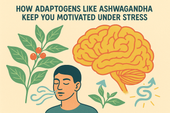
How Adaptogens Like Ashwagandha Keep You Motivated Under Stress
Feeling overwhelmed and unmotivated? 🌿 Discover how adaptogens like Ashwagandha can help you stay centered, focused, and energized under stress. Learn how supplements, breathwork, and therapy work together to restore your natural motivation and help you thrive — even during life’s toughest moments. 💪✨
-
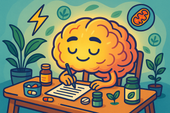
Supplements That Support Long-Term Productivity Without the Crash ⚡🌿
Cortisol — your body’s main stress hormone — can be both your best friend and worst enemy. ⚡ When balanced, it keeps you focused, energized, and ready to act. But when it stays high for too long, it leads to fatigue, anxiety, and emotional crashes. Learn how to regulate cortisol naturally through supplements, sleep, and stress management to maintain calm, steady productivity. 🌿
-

Why Energy Levels and Motivation Go Hand in Hand ⚡🧠
B-vitamins are the brain’s spark plugs 🔋. They turn food into fuel, support neurotransmitter production, and keep your mood, energy, and focus balanced. Learn how vitamins like B6, B9, and B12 work together to power the nervous system, reduce fatigue, and keep motivation high. 🌿
-
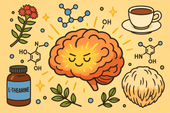
The Science of Motivation: Can Nootropics Help You Stay Focused? 🧠⚡
Nootropics are nature’s tools for sharper thinking and sustainable focus 🧠🌿. From Rhodiola and Lion’s Mane to L-theanine and Bacopa, these brain-boosting compounds enhance motivation, memory, and stress resilience. Learn the science behind how nootropics work — and how to use them safely for peak mental performance and clarity. ⚡
-
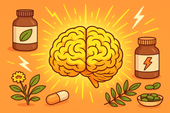
How Natural Supplements Can Boost Your Daily Drive
Cortisol is your body’s main stress hormone — powerful, necessary, but often misunderstood. ⚡ When balanced, it keeps you alert and energized; when chronically elevated, it drains mood, motivation, and focus. Learn how to regulate cortisol naturally through nutrition, supplements, and calming lifestyle habits for steady energy and emotional balance. 🌿
-
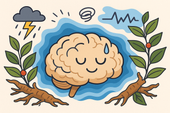
Ashwagandha for Stress and Low Mood
Breathwork is more than a relaxation tool — it’s a way to rewire your nervous system. 🌬️ Through intentional breathing, you can reduce stress hormones, improve focus, and calm emotional turbulence. This guide explores the science of breathwork and its powerful effects on mental clarity, resilience, and emotional regulation. 🌿
-

Mood-Boosting Smoothie Recipes
Your blood sugar affects far more than energy — it influences mood, focus, and emotional stability too 🍎. Learn how maintaining balanced glucose levels supports brain health, reduces anxiety, and prevents emotional crashes. Discover the foods and habits that keep your mind calm and your energy steady throughout the day. 🌿
-
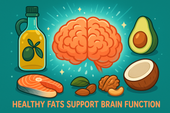
How Healthy Fats Support Brain Function
Your brain thrives on healthy fats 🧠💧. From omega-3s to MCTs, the right fats enhance focus, memory, and mood while protecting against inflammation and aging. This article explores how good fats — like those from olive oil, salmon, avocado, and nuts — build sharper thinking, emotional balance, and lasting brain vitality. 🌿
-
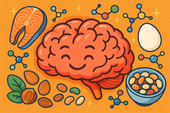
The Role of Protein in Mental Clarity
Protein isn’t just for muscles — it’s for your mind. 🧠 This guide explores how amino acids from high-quality protein fuel neurotransmitters, stabilize mood, and sharpen focus. Learn how balanced protein intake supports dopamine, serotonin, and energy regulation to boost mental clarity and emotional stability naturally. 🍳🌿
-
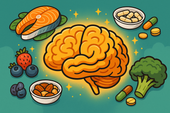
Nutrients That Support Emotional Stability
Your emotions are built from nutrients as much as from thoughts 🌿. This science-backed guide reveals the vitamins, minerals, and healthy fats that stabilize mood and reduce stress — from B-vitamins and magnesium to omega-3s and probiotics. Learn how balanced nutrition supports neurotransmitters, strengthens resilience, and promotes lasting calm and clarity 🧠✨.
-
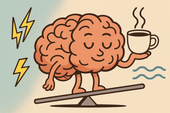
How Caffeine Affects Your Mood ☕
Your morning coffee might lift your spirits — but what’s really happening inside your brain? ☕ This in-depth guide explores how caffeine affects mood, motivation, dopamine, and stress. Learn how to enjoy caffeine mindfully without triggering anxiety, burnout, or emotional crashes. Discover the science behind your energy highs and lows — and how to find calm, sustainable focus. 🌿
-
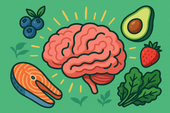
The Best Anti-Inflammatory Diet for Mental Health
Inflammation doesn’t just affect your body — it impacts your mood, focus, and emotional resilience too 🌿. This comprehensive guide reveals how an anti-inflammatory diet can support mental health by reducing neuroinflammation, balancing gut bacteria, and stabilizing blood sugar. Learn which foods to eat (and which to avoid) to protect your brain, boost serotonin, and promote lasting calm. 🧠✨
-

Why Sugar Spikes Can Worsen Depression
Sugar highs can make you feel good for a moment — but what comes next can fuel emotional crashes and deepen depression 🍭. This article explains how blood sugar spikes disrupt brain chemistry, increase inflammation, and destabilize serotonin. Learn how food, supplements, breathwork, and therapy can help you break the sugar–mood cycle and restore lasting emotional balance 🌿.
-
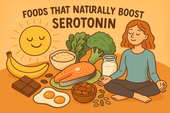
Foods That Naturally Boost Serotonin
Serotonin isn’t just a brain chemical — it’s your body’s built-in mood stabilizer 🌞. This in-depth guide explores how natural foods like salmon, eggs, bananas, and dark chocolate can elevate serotonin levels, while gut health, key nutrients, supplements, breathwork, and therapy create the perfect synergy for calm and emotional balance. Learn how to support your mind through diet, lifestyle, and mindset — naturally. 🌿
-
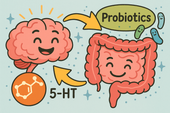
Probiotics for Mood Balance
-
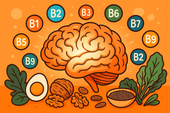
B-Vitamins and Their Role in Mental Health
Methylation is one of your body’s most important biochemical processes — influencing mood, energy, and focus. Powered by B-vitamins like B6, B9, and B12, it helps your brain create serotonin, detox efficiently, and maintain emotional balance. 🌿
-
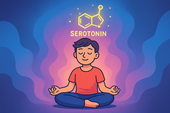
5-HTP for Serotonin Support
Calm isn’t just an emotion — it’s a physiological state where your body and mind finally sync in peace. By slowing your breath, softening your thoughts, and creating safety within, you restore the deep relaxation your nervous system craves. 🌿
-
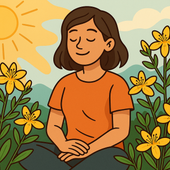
St. John’s Wort for Mild Depression
Antidepressants can be life-changing for many — but understanding how they work and what natural options like St. John’s Wort can complement them is key. Learn how both approaches affect brain chemistry, mood balance, and long-term emotional wellness. 🌿
-
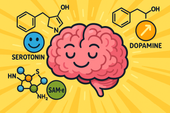
SAM-e: A Natural Mood Booster
Emotional regulation is the art of staying calm and grounded, even when life feels chaotic. By balancing your brain, body, and breath, you can respond with clarity instead of reacting from stress — building real emotional resilience and inner peace. 🌿
-

Rhodiola Rosea for Emotional Resilience
Neuroplasticity is your brain’s ability to grow, adapt, and heal — even after stress or trauma. Every thought, emotion, and habit reshapes your neural pathways, helping you build stronger emotional resilience, sharper focus, and lasting mental balance. 🌿
-
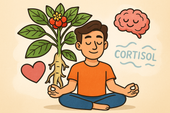
Ashwagandha for Stress and Low Mood
Adaptogens are nature’s stress balancers — powerful herbs like ashwagandha, rhodiola, and reishi that help your body adapt to tension, fatigue, and change. By regulating cortisol and supporting your nervous system, they build calm focus and emotional resilience from the inside out. 🌙
-
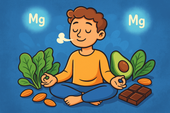
Magnesium’s Role in Emotional Regulation
Neuroscience helps us understand why we feel, think, and react the way we do. From brain chemistry and neural circuits to stress responses and emotional learning, the science of the brain reveals how our minds can heal, grow, and find balance. 🌿
-

Omega-3 Fatty Acids and Emotional Well-Being
Nutrients aren’t just fuel — they’re communication signals that tell your brain and body how to function. From magnesium and vitamin D to omega-3s and B vitamins, the right mix of nutrients helps calm your mind, balance hormones, and support emotional and physical well-being. 🌙
-
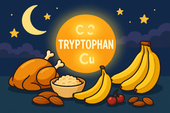
The Role of Tryptophan in Sleep Health
Mental health isn’t just the absence of illness — it’s the foundation of calm, focus, and emotional resilience. From managing stress and anxiety to nurturing self-compassion, understanding your mental well-being is the first step toward a balanced, more peaceful life. 🌿
-

Nutrients That Promote Nighttime Relaxation
Potassium does more than balance fluids — it also helps your body and mind relax at night. By calming nerves, reducing muscle tension, and supporting steady heart rhythm, potassium-rich foods like bananas, sweet potatoes, and coconut water can promote deeper, more restful sleep. 🌙
-
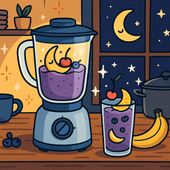
Sleep-Friendly Smoothie Recipes
Melatonin is your body’s natural sleep signal — a hormone that tells your brain when it’s time to rest. Learn how melatonin works, which foods and habits boost its production, and how to use it wisely for deeper, more restorative sleep without dependence. 💤
-
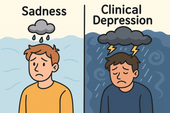
The Difference Between Sadness and Clinical Depression
Your emotions aren’t just in your mind — they’re written in your brain chemistry. Serotonin, dopamine, and GABA work together to regulate mood, motivation, and calm. When they fall out of balance, you may feel anxious, fatigued, or low. Learn how these brain chemicals influence your mental health and what you can do to restore harmony naturally. 🌿
-
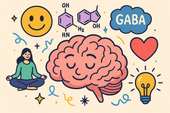
How Brain Chemistry Influences Mood
Your brain is a symphony of neurotransmitters — serotonin, dopamine, GABA, and more — working together to shape how you think and feel. When they’re balanced, you experience calm focus and emotional stability. When they’re not, mood swings and fatigue can follow. Learn how to naturally support these vital messengers for better mood and mental clarity. 🌿
-
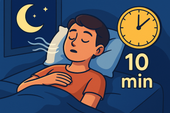
How to Fall Asleep in Under 10 Minutes
The military knows a few secrets about falling asleep fast — and they work even in chaos. This article explores the science behind rapid relaxation, including the famous “Military Sleep Method,” which teaches your body to shut down stress and rest on command. Learn how discipline, breath, and focus can help anyone fall asleep in minutes. 🌙
-
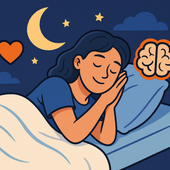
Why Emotional Resilience Improves Sleep
Emotional resilience isn’t just about mental strength—it’s also a key ingredient for better sleep. When your emotions are balanced, your body releases fewer stress hormones, your mind quiets faster, and your sleep becomes deeper and more restorative. Learn how to cultivate calm through mindset, breathwork, and daily habits. 🌙
-
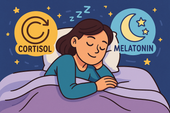
The Connection Between Stress Hormones and Sleep
Chronic stress can quietly reshape your body’s chemistry, raising cortisol, disrupting sleep, and draining your energy. This guide explores how long-term stress affects your nervous system, hormones, and rest—and how to restore calm through breathwork, nutrition, and daily recovery rituals. 🌿
-
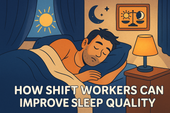
How Shift Workers Can Improve Sleep Quality
For shift workers, caffeine can be both a lifeline and a sleep disruptor. Learn how to use it strategically—boosting alertness during work hours without sabotaging rest. This guide explores timing, dosage, and smarter natural alternatives to keep your energy steady and your sleep restorative. 🌙
-
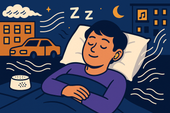
How to Sleep Better in a Noisy Environment
Living in a noisy area doesn’t mean sacrificing your rest. Learn practical and natural strategies to sleep better in loud environments—from using sound masking and breathwork to creating calming rituals that help your brain tune out the chaos. Find inner silence even when the world outside won’t quiet down. 🌙
-
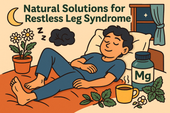
Natural Solutions for Restless Leg Syndrome (RLS)
Struggling to sleep deeply and wake refreshed? This soothing guide explores how the body restores itself during quality sleep—and how to support it naturally. Learn about the science of rest, the role of nutrients, and the rituals that promote deep, uninterrupted slumber. 🌙
-
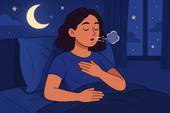
How to Overcome Middle-of-the-Night Anxiety
Middle-of-the-night anxiety can make even the calmest mind spiral into worry. This guide reveals practical, evidence-based techniques to help you stop the 3 A.M. overthinking loop—from breathwork and journaling to herbal supplements and therapy-based tools. Learn to retrain your nervous system and find peace when the world is asleep. 🌙
-
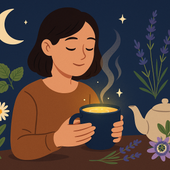
The Perfect Evening Herbal Blend
Discover the calming power of nature in your teacup. The perfect evening herbal blend combines chamomile, lemon balm, lavender, and adaptogens like ashwagandha to relax your body and quiet your mind before bed. Learn how to craft and customize a soothing, sleep-enhancing tea ritual that helps you unwind, restore, and wake up refreshed. 🌙
-
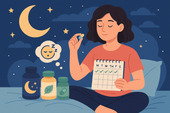
How to Cycle Sleep Supplements for Maximum Effectiveness
Wondering why your sleep supplements stop working after a while? This guide breaks down how to cycle sleep aids like melatonin, magnesium, and ashwagandha for consistent, long-term results. Learn when to rest your body, how to prevent tolerance, and what natural methods—like breathwork and therapy—enhance your sleep cycles. 🌙
-
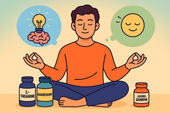
The Best Supplements for Both Relaxation and Focus
Calm your mind and sharpen your focus with the perfect blend of natural supplements. From L-theanine and magnesium to Rhodiola and Lion’s Mane, this science-based guide shows how to achieve relaxation and clarity at the same time. Discover stacks that support your nervous system, balance mood, and keep your mind laser-focused without the crash. 🌿
-

How to Sleep Better During Travel
Traveling can be thrilling—but sleepless nights can ruin even the best trips. From supplements like magnesium and melatonin to soothing breathwork and therapy-based techniques, this guide shows you how to sleep deeply on planes, in hotels, or across time zones. Learn to calm your body, reset your circadian rhythm, and build rest rituals that work anywhere in the world 🌙
-
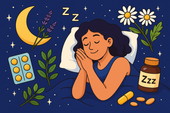
Improving Sleep in Menopause with Supplements
Menopause can make peaceful sleep feel impossible — but balance is within reach 🌿. This article explores how supplements like magnesium, ashwagandha, and black cohosh can ease night sweats, calm the mind, and restore your natural sleep rhythm during hormonal changes.
-
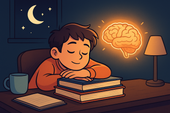
Sleep Support for Students During Exams
Exam stress can make it hard to rest — but sleep is what helps you perform your best 💤. This article explains how to improve sleep quality during exams through better study habits, natural supplements, breathwork, and therapy tools to calm the mind and sharpen focus.
-

Rest Strategies for Entrepreneurs
Entrepreneurs often burn out chasing their vision — but rest is the real fuel for success 🌙. This article explores science-backed recovery strategies for founders, including sleep, breathwork, therapy, and nutrition techniques that sharpen creativity and sustain performance.
-

How Sleep Affects Athletic Recovery
Sleep is where strength is built. 💤 This article explores how deep sleep drives muscle recovery, hormonal balance, and athletic performance — plus how supplements like magnesium, melatonin, and ashwagandha can enhance overnight repair and boost training results.
-

Better Sleep for People with Chronic Pain
Living with chronic pain makes sleep feel impossible — but it’s not. 🌙 This article explores how pain disrupts rest and how to rebuild your sleep through gentle breathwork, calming nutrition, therapy, and supplements that help your body relax and heal.
-

How to Sleep Better During Seasonal Changes
Seasonal shifts can throw your sleep off balance 🌦️. This article explains how light, temperature, and hormones change with the seasons — and how to restore your rhythm naturally through melatonin-supportive foods, breathwork, and therapy for emotional balance.
-

Foods That Naturally Boost Melatonin
Want to fall asleep faster without supplements? 🌙 This article explores how foods like tart cherries, pistachios, and kiwi naturally boost melatonin, the hormone that regulates sleep. Learn how to build an evening meal plan — plus simple rituals like breathwork and herbal tea — to improve rest and reset your circadian rhythm.
-

The Role of Herbal Tea in Relaxation
Herbal tea is more than comfort in a cup 🍵 — it’s nature’s gentle way to calm the mind and relax the body. This article explores how teas like chamomile, lavender, and lemon balm support stress relief, sleep quality, and emotional balance — plus how to pair them with magnesium, breathwork, and mindful rituals for deeper peace.

















































